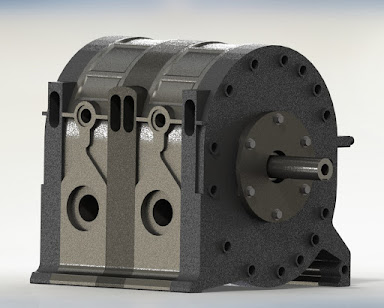VAWT

The design was made using solidworks and calculations were done using python.A vertical axis wind turbine (VAWT) has blades mounted on the top of the main shaft structure, rather than in the front like an aircraft rotor. The generator is usually placed at the tower base. Used less often than their horizontal counterparts, VAWTs are more practical in residential areas. VAWT Advantages These turbines have fewer parts than those that orient the rotary mechanism and blades horizontally. That means fewer components to wear out and break down. Also, the supporting strength of the tower doesn’t need to be as much, because the gearbox and generator are near the ground. Parts for controlling pitch and yaw aren’t needed either. The turbine doesn’t have to be facing the right wind direction either. In a vertical system, air flowing from any direction or speed can rotate the blades. Therefore, the system can be used to generate power in gusty winds and when they’re blowing steadily. Disadv...



